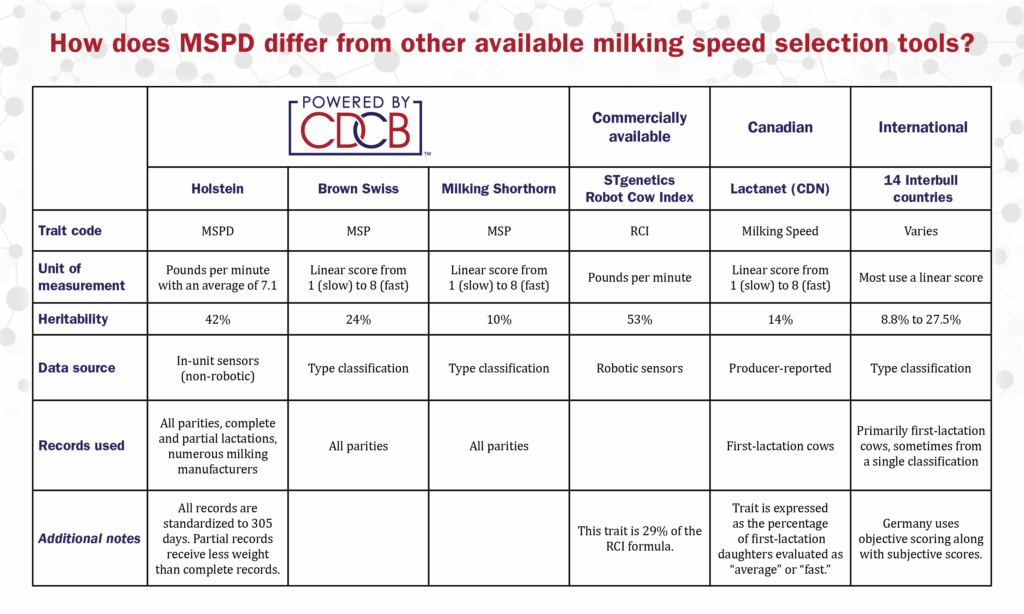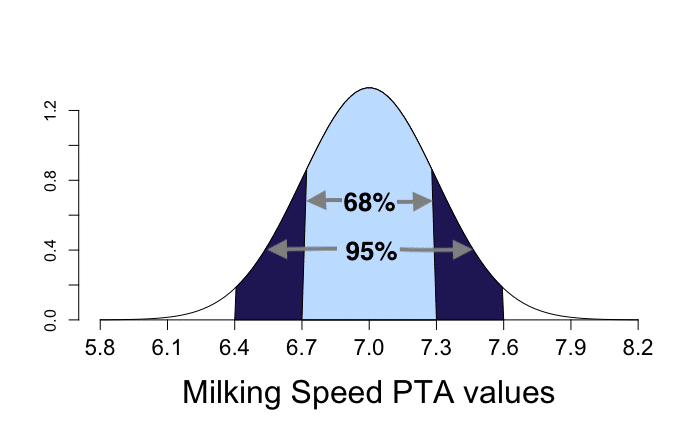MSPD represents the average pounds of milk per minute expected of an animal’s offspring in a herd with average management conditions using a conventional milking system. Data used to support this trait is collected using sensor technology in parlors across the United States, providing an objective measurement tool for milking speed.
This trait is not to be confused with milking speed (MSP) produced for Brown Swiss and Milking Shorthorn, which is determined based on subjective producer reports collected during type classification.


